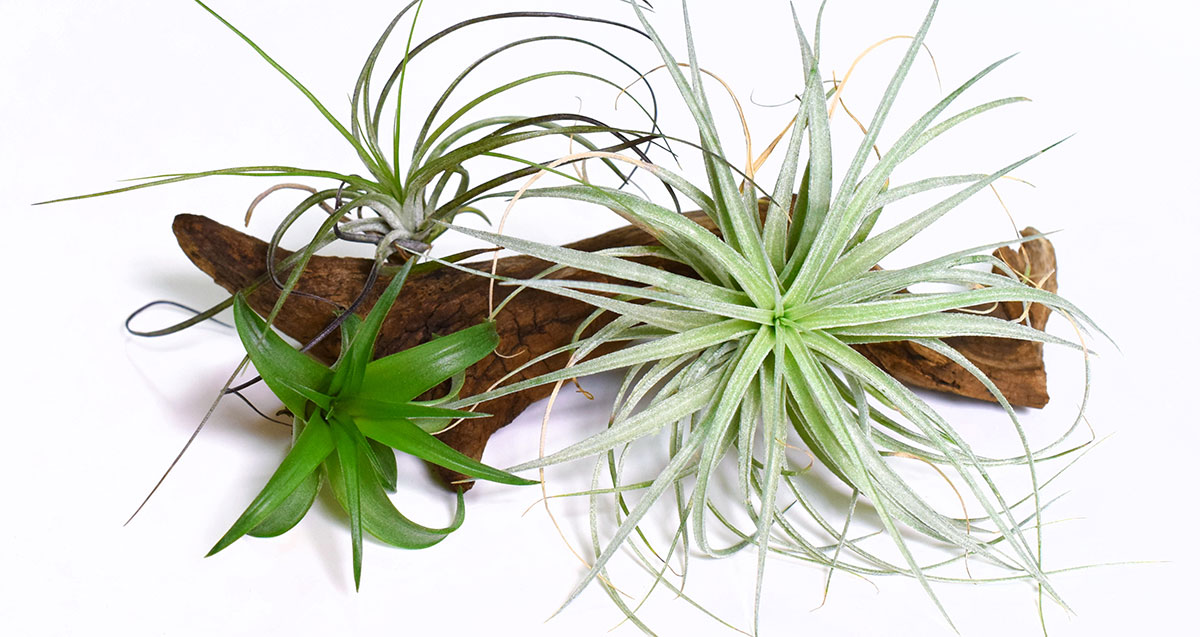Fun Shapes and Easy Maintenance
Air plants were popular in the 1970s when they hung in macrame plant hangers or were placed in terrariums, but the fad faded until a few years ago. Air plants made a comeback as more varieties began to fascinate us with unusual shapes and easy maintenance that fits our busy lives.
Growing up in the Rocky Mountain West, I had never seen tropical air plants in their natural environment. My first experience was in Houston. On a daily walk with my son, he suddenly plucked a small spiky growth from a low-hanging tree branch.
Tropical air plants are in the bromeliad family, genus Tillandsia, and are native to the Southern United States, Mexico, and Central and South America. They are epiphytes that attach their roots to other plants and don’t require soil. You can place them in seashells, attach to driftwood, hang in the air, or put in a pot with rocks. Let your imagination go wild. Just don’t plant in soil.
Although there are many species and varieties, Tillandsia stricta is most common. Its thick green or bluish-green spiky leaves grow in a rosette pattern and point upward. It produces a flower that lasts for only one day. Tillandsia ionantha is beautiful with leaves changing color from green to brilliant red or pink before producing bright purple flowers.
Air plants with more silvery leaves tend to be more drought tolerant. Tillandsia xerographica is larger with beautiful silvery-green rosettes formed by thick, curly leaves spiraling from the center. Although it has adapted to dry environments, it still needs regular watering. Mist it occasionally and water once a week by submerging for half an hour, then gently shake excess water from leaves to avoid rot.
In nature, air plants get food from dead leaves, bark, and insect droppings that fall into rainwater stored in their centers. Since the decayed nutrients are absorbed by its leaves, rainwater is preferable to household chlorinated water. If you don’t have rainwater, use filtered water and fertilize occasionally. Drop half-strength liquid fertilizer monthly or quarterly in the plant’s center, but don’t overfertilize.
Like all plants, air plants need the right amount of water and light and correct temperatures to thrive. If your plant feels mushy or has dark spots on the base, it may be rotting from too much water. (Overwatering may also attract pests). If leaf tips turn brown and crispy, it may be dehydrated. Bleached-looking leaves may indicate too much sun; losing leaves means too little sun.
You’ll know if your plant is getting what it needs if it blossoms. Plants bloom to propagate, so after the flower dies, cut it off to promote new growth. You can separate the new “pups” from the mother or allow them to clump together. The mother plant (which lives two to five years) will eventually die as the offsets grow. By encouraging offshoots, your air plant can live indefinitely.
Master Gardener Vicki Spencer has an eclectic background in conservation, water, natural resources, and more.
Want more gardening tips? Click here to previous gardening columns.

